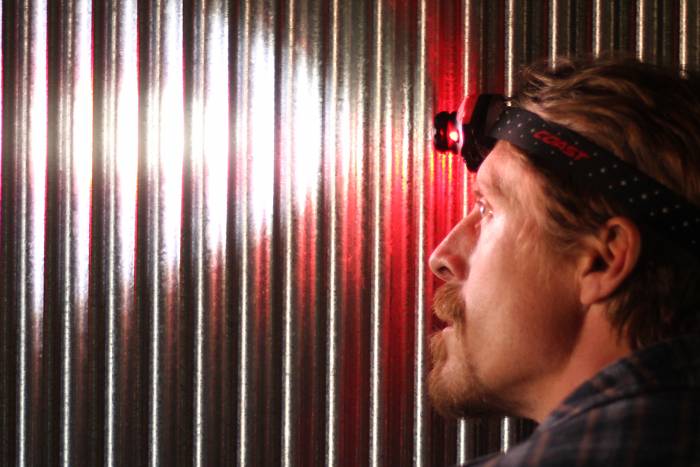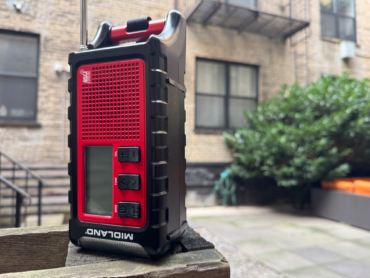The common headlamp is going rechargeable, and throw-away batteries are becoming a thing of the past. Are you ready to make the switch?

Gone are the days of lugging extra batteries. Headlamps that recharge via USB rather than gobbling up AAA batteries are among the best and simplest gear evolutions in recent memory.
Most headlamp brands now offer the choice to plug in and recharge via USB or a wall outlet. Some allow both rechargeable or disposable batteries in a single light. See below for a few reasons we’ll go with a rechargeable light (almost) every time.
Long-Term Cost? Rechargeable Saves Money
The price tag on a rechargeable headlamp is often more than its alkaline-only-powered counterparts.
For example, Coast Headlamps’ 540-lumen FL85, powered by three AAA batteries, costs $71.99, while its 530-lumen FL75R, a rechargeable lithium-ion unit, costs $109.99.

But you’ll eventually pay the difference if regularly buying AAAs to power the FL85.
Most rechargeable Li-ion packs are good for several hundred cycles, and you won’t have to spend extra to constantly feed them disposable batteries — although you can (and should) carry a few alkaline batteries as a backup if your rechargeable lights give you the option.
Environment And Waste
It doesn’t feel good to regularly dump AAAs into the trash or recycling bin.
Although most alkaline batteries no longer contain mercury and don’t leak toxic materials like they used to, they still add to the waste stream.
Plus, recycling batteries usually requires a stop at at a specific location, or setting them aside from your normal household recycling. Many people don’t know this, or won’t bother with the hassle.
Large-scale, rechargeable headlamps are better for our planet.
Space, Weight, And Hassle On The Trail
Even if you take a few alkaline batteries as a backup, rechargeable batteries will save the weight of lugging around a pack of AAAs. Plus, rechargeable batteries won’t spill out of the package and into every crevasse of a backpack.
If you have a rechargeable headlamp, you can carry a portable USB power bank. This can be just as bulky as a supply of disposable batteries, but the convenience of a single recharging device over handfuls of batteries simplifies life out of a backpack.
Versatility
If a headlamp is powered by AAAs alone, you’re in a pickle if you run out of batteries.
Rechargeable battery systems can run out of juice. But most of them can be powered by alkaline batteries as a backup. Coast calls this its Dual Power System, which the FL75R features.

Even if nothing goes wrong with your headlamp, it’s nice to have multiple charging options – sometimes you don’t know what resources you’ll have. For example, Coast’s rechargeable lamps feature a Flex Charge System, meaning the battery pack can be charged using a either a DC (standard USB) or AC (converter required) power source. (The battery pack can also be charged either inside or outside the headlamp.)
Confidence In Battery Life
Once you use alkaline batteries for the first time, their remaining lifespan can be a mystery.
“I’ve headed out on some trail runs not sure whether my batteries were going to last, which is unnerving,” said Kurt Decker, a runner from Minneapolis who logs many nighttime miles. “Sometimes I’d replace batteries that were probably half-full, just to be certain, which is pretty inefficient.”

The beauty of a rechargeable battery is that some models will display their remaining juice, and others can be charged in full before each use.
“Then I can head out on every run knowing I have a full battery life,” he said.
– This post is sponsored by Coast. Check out their line of rechargeable headlamps here.






